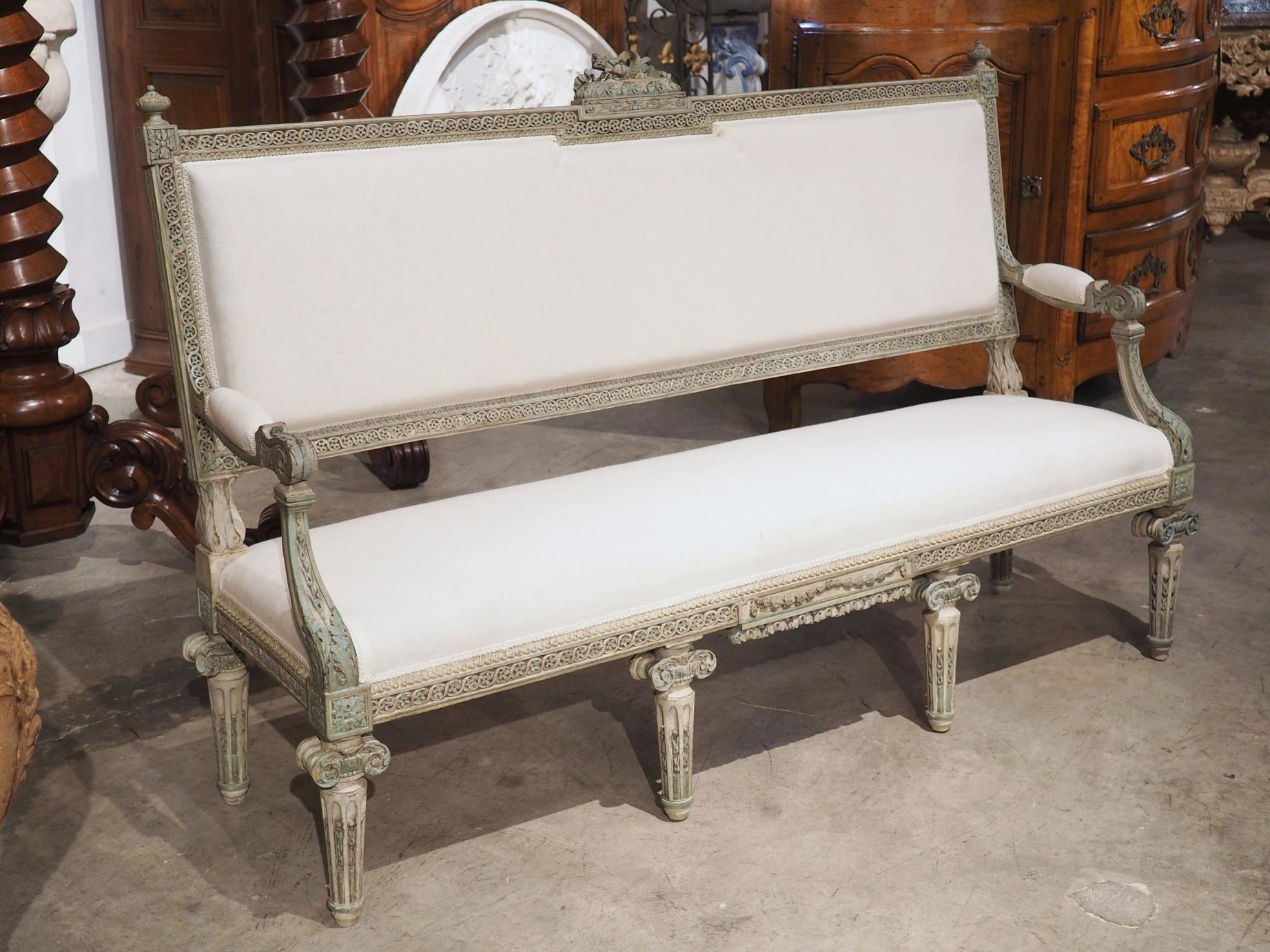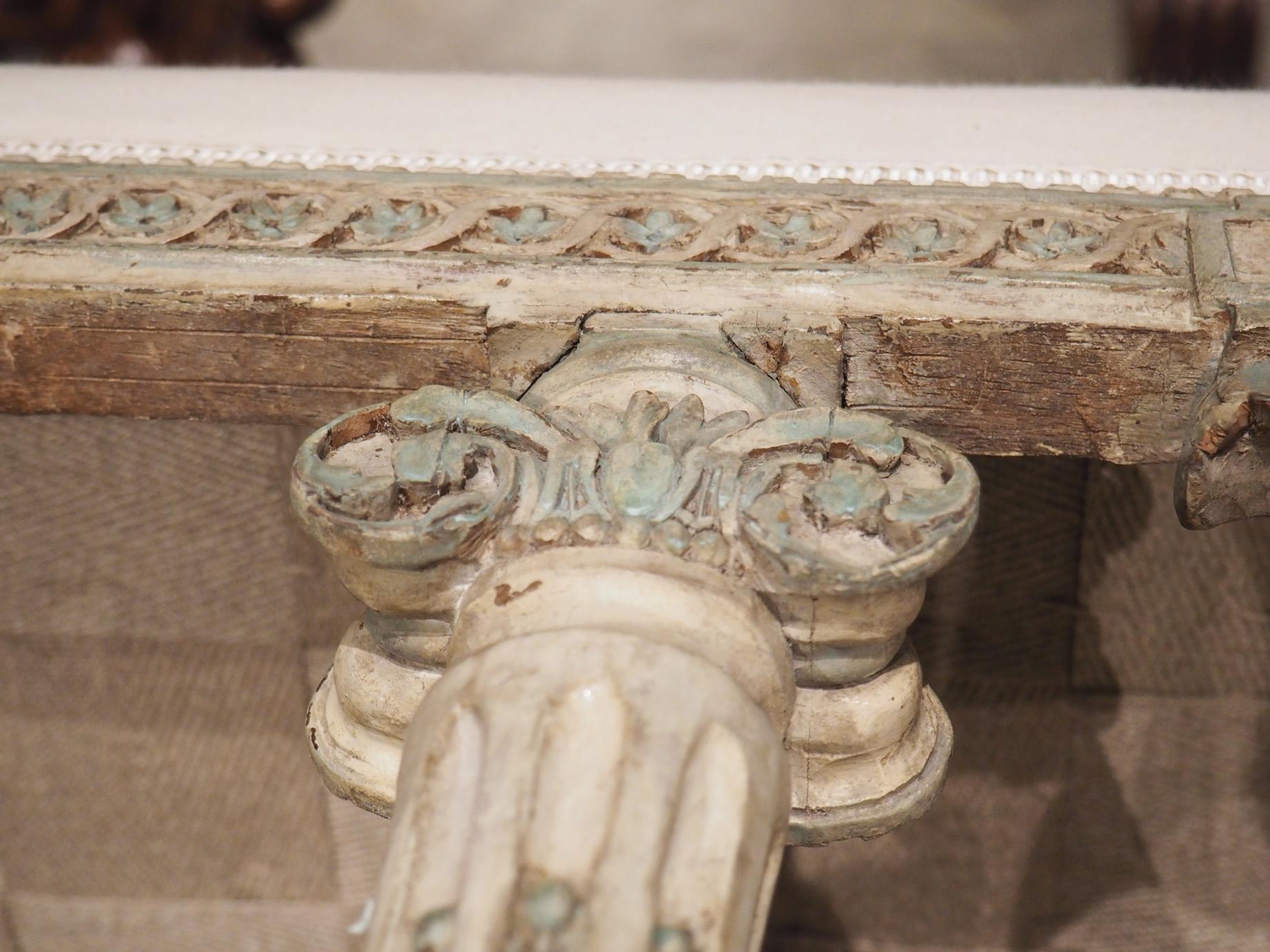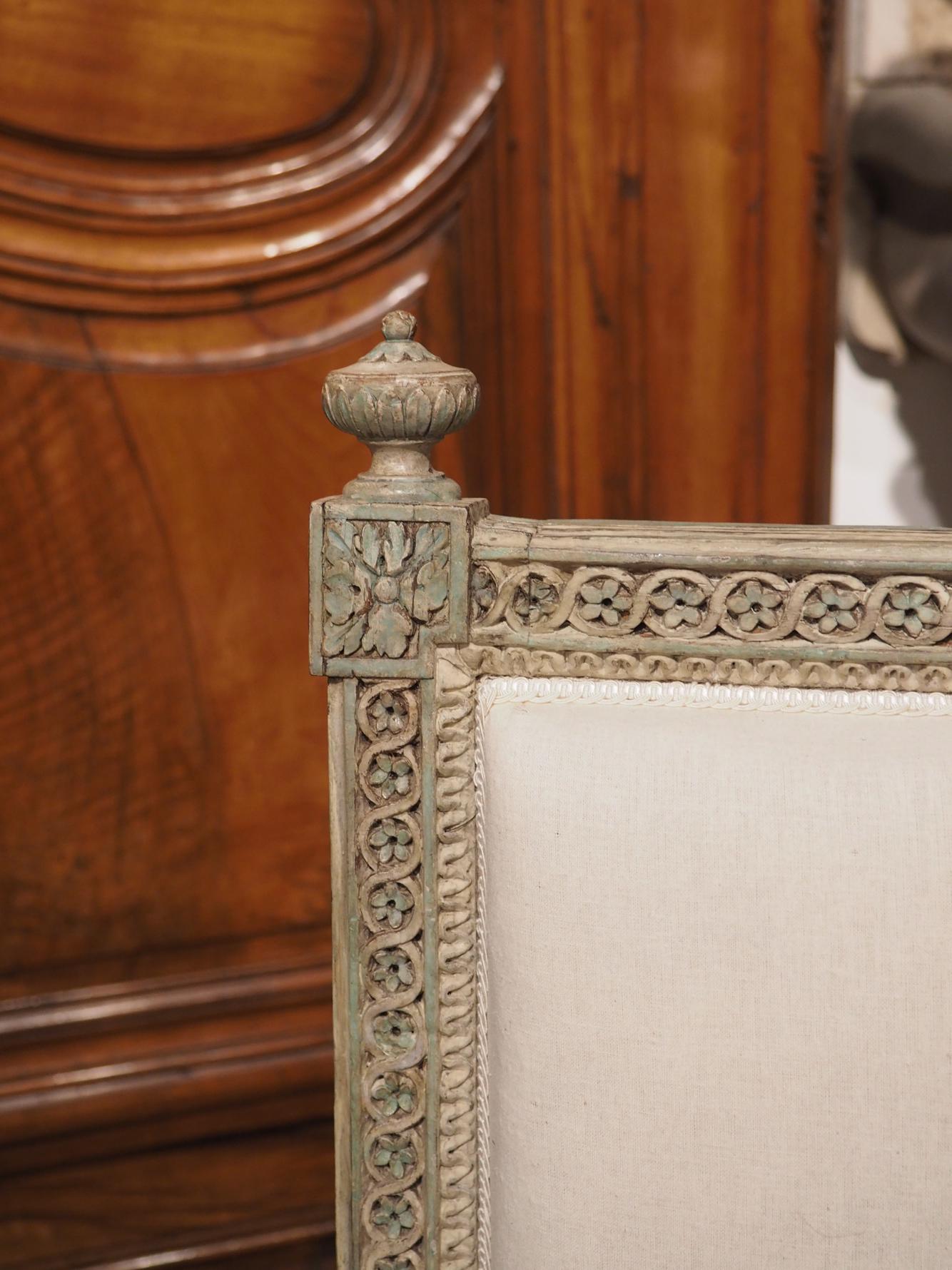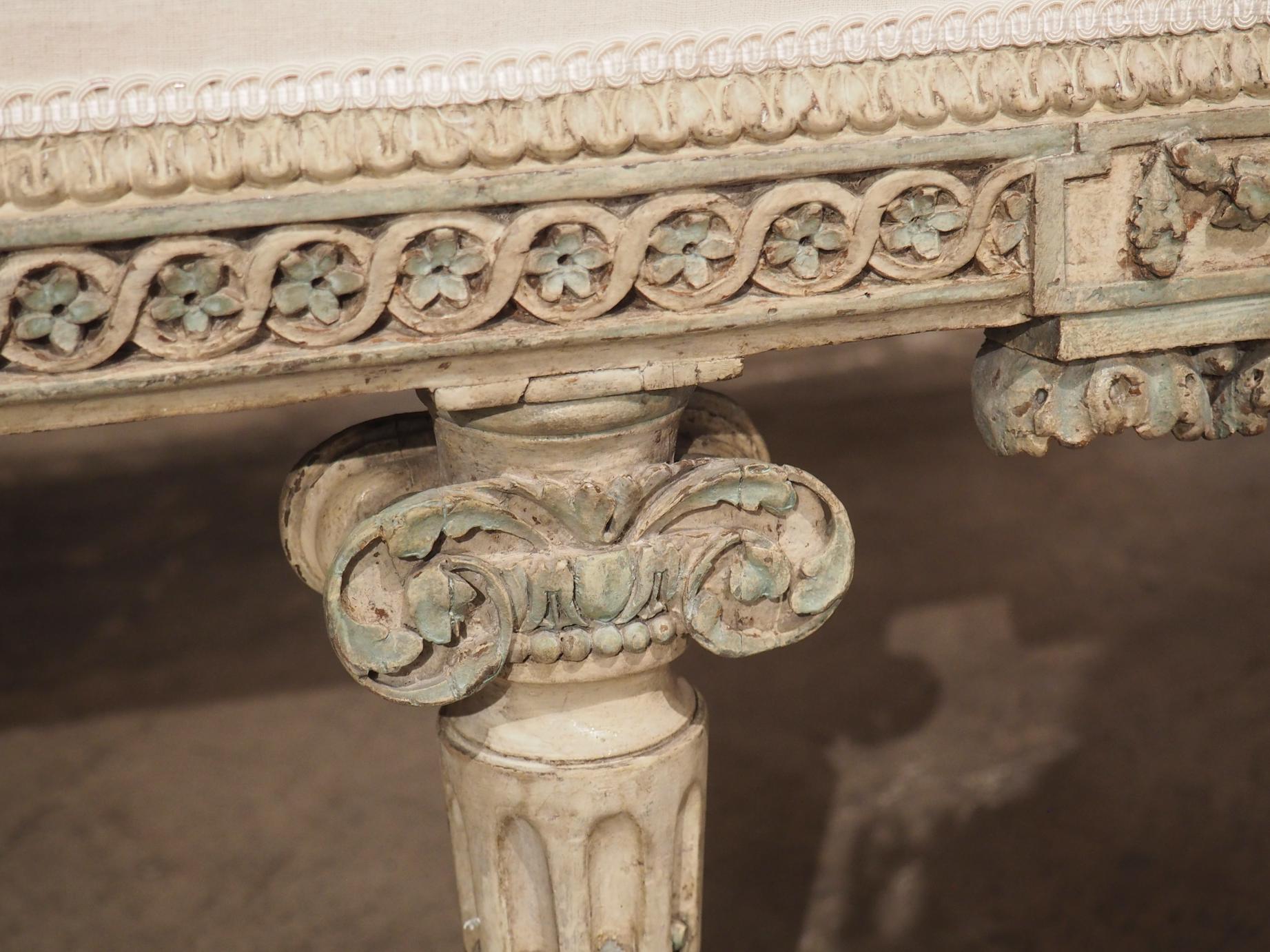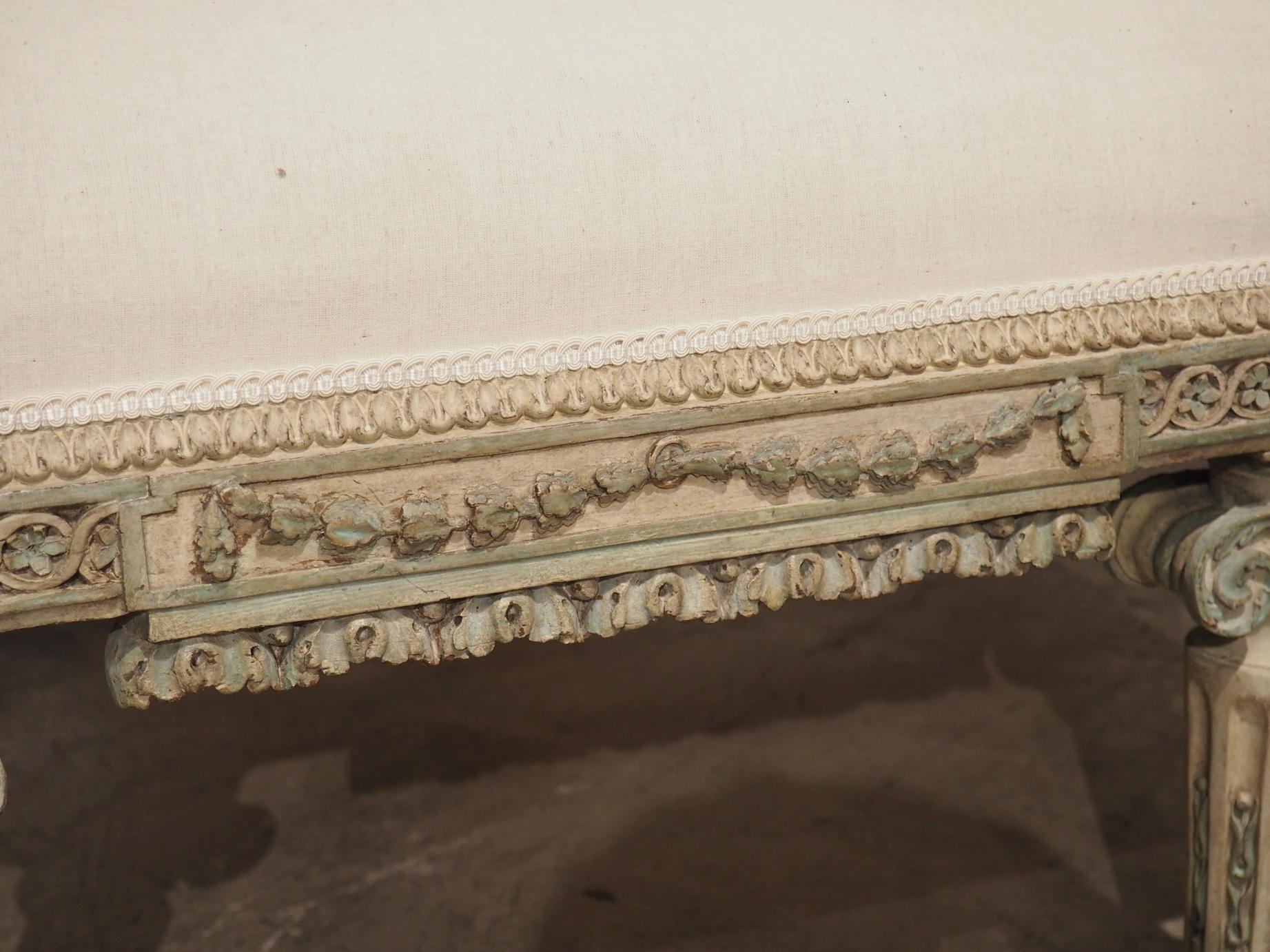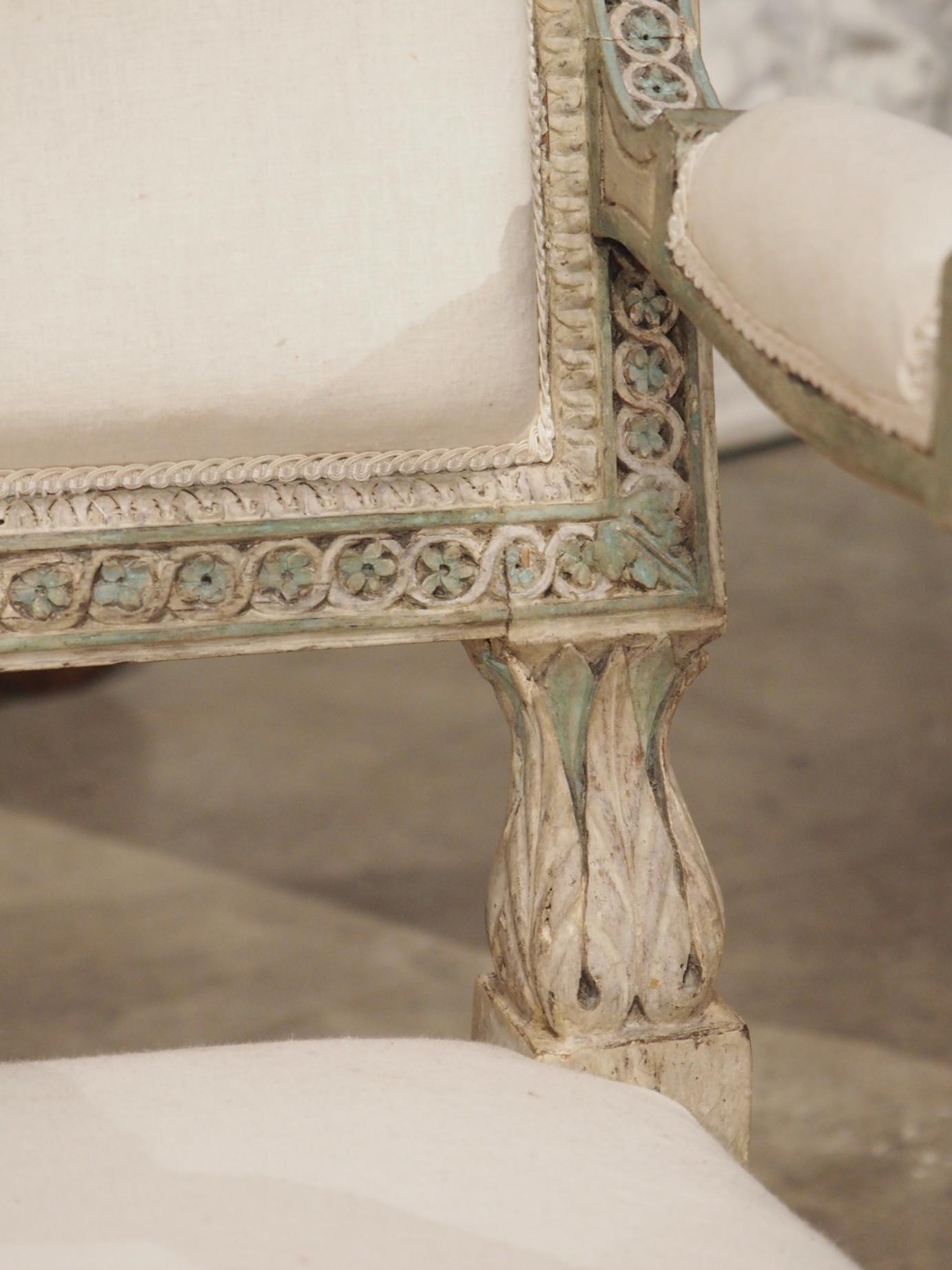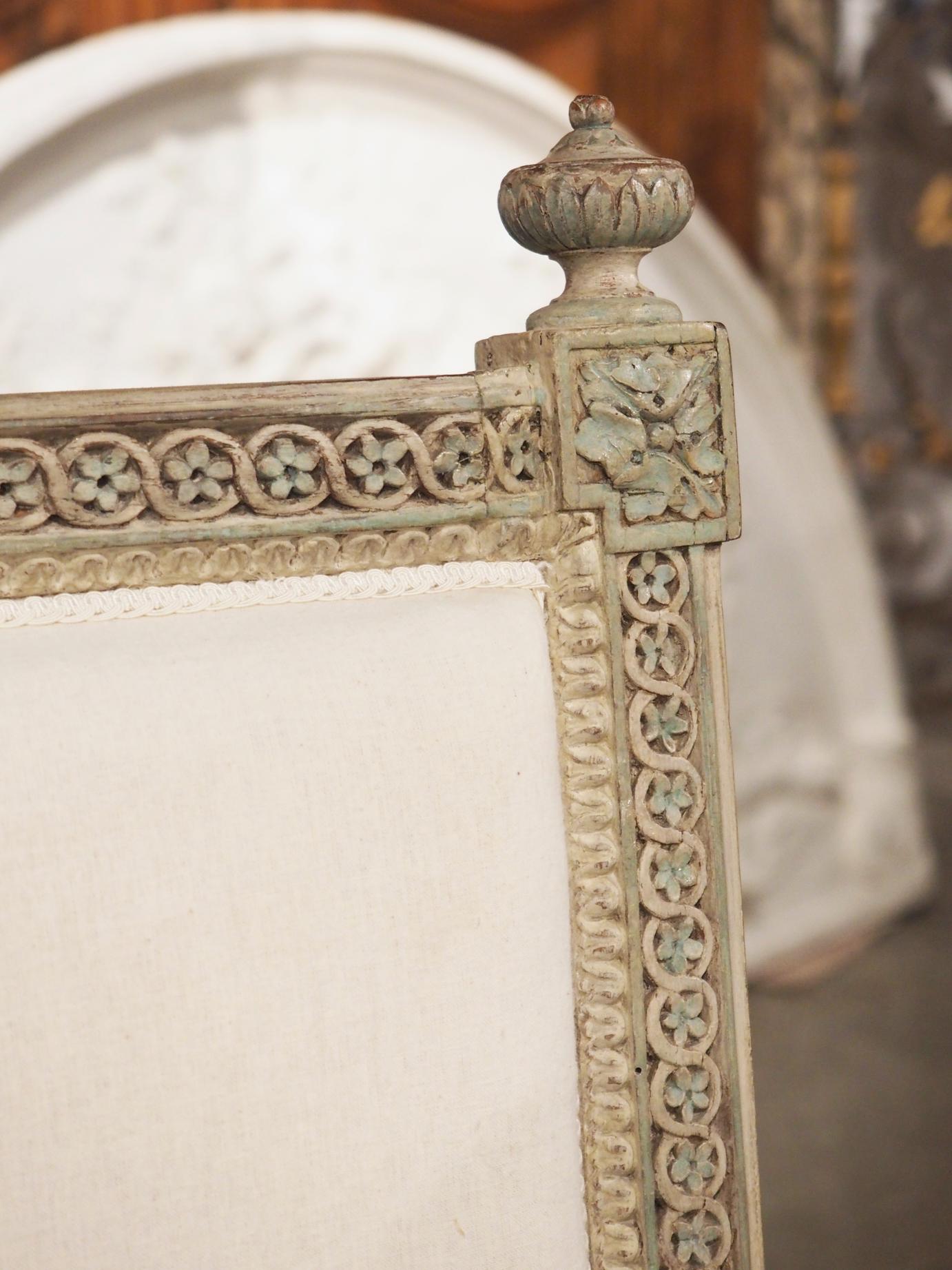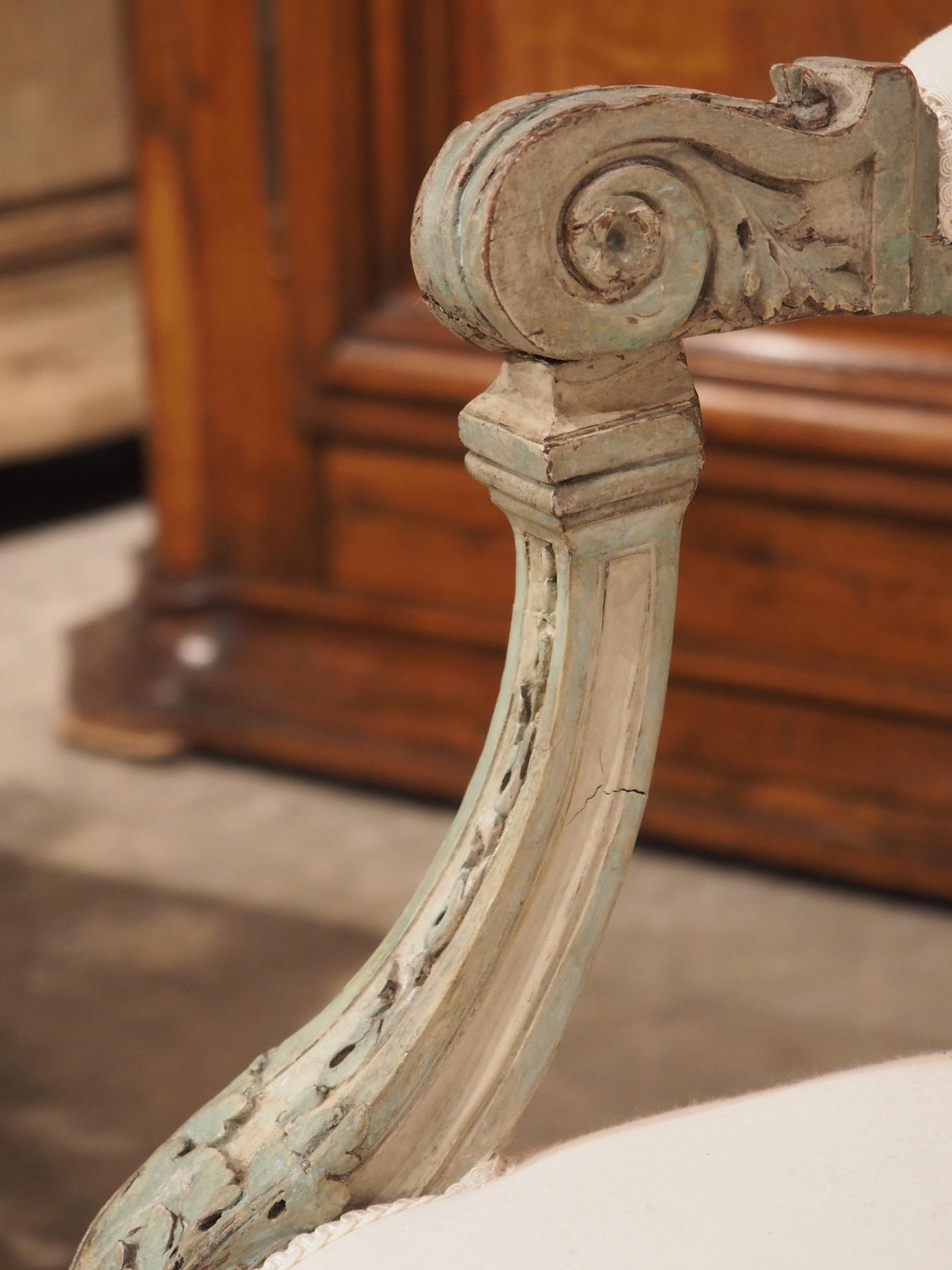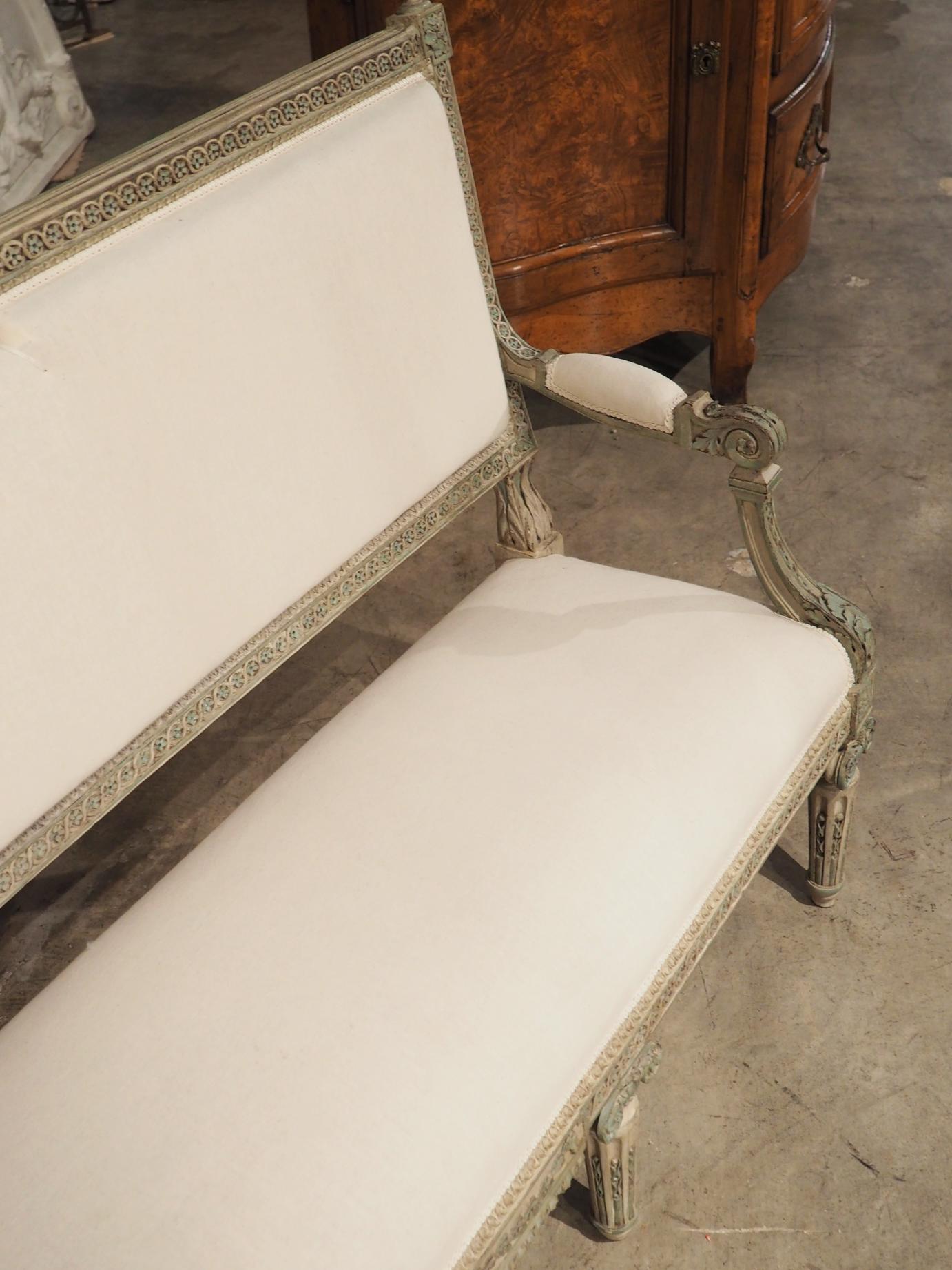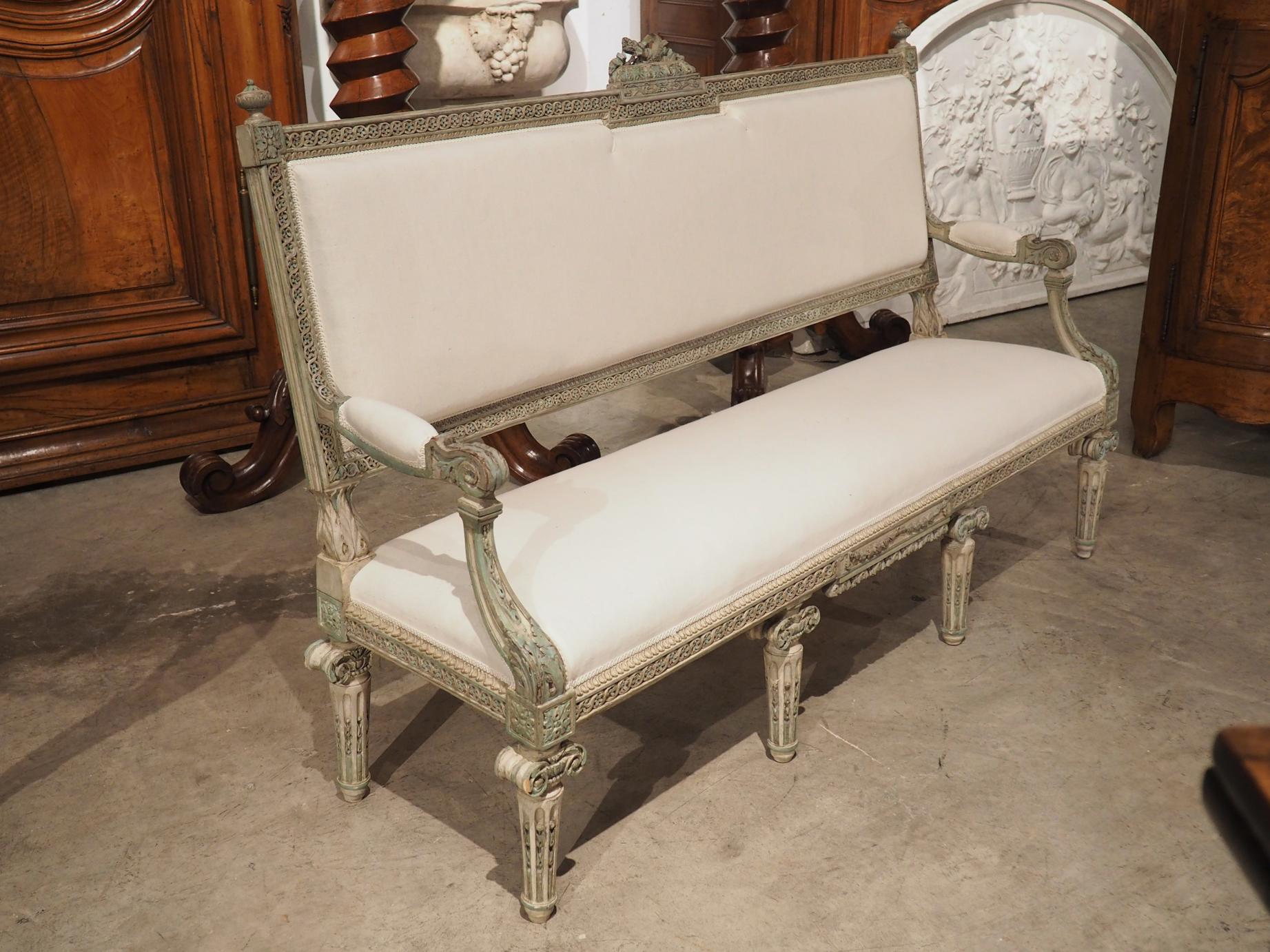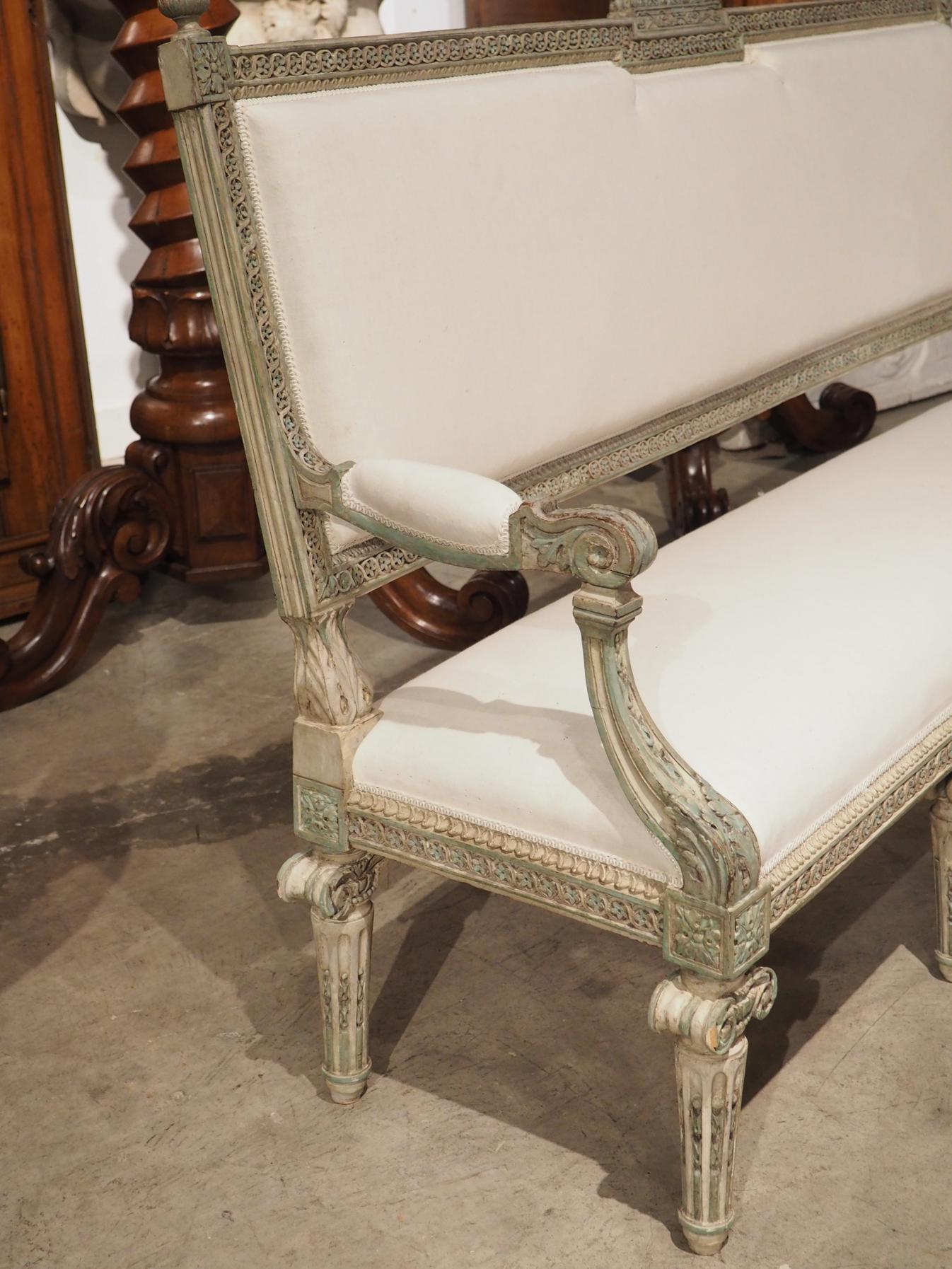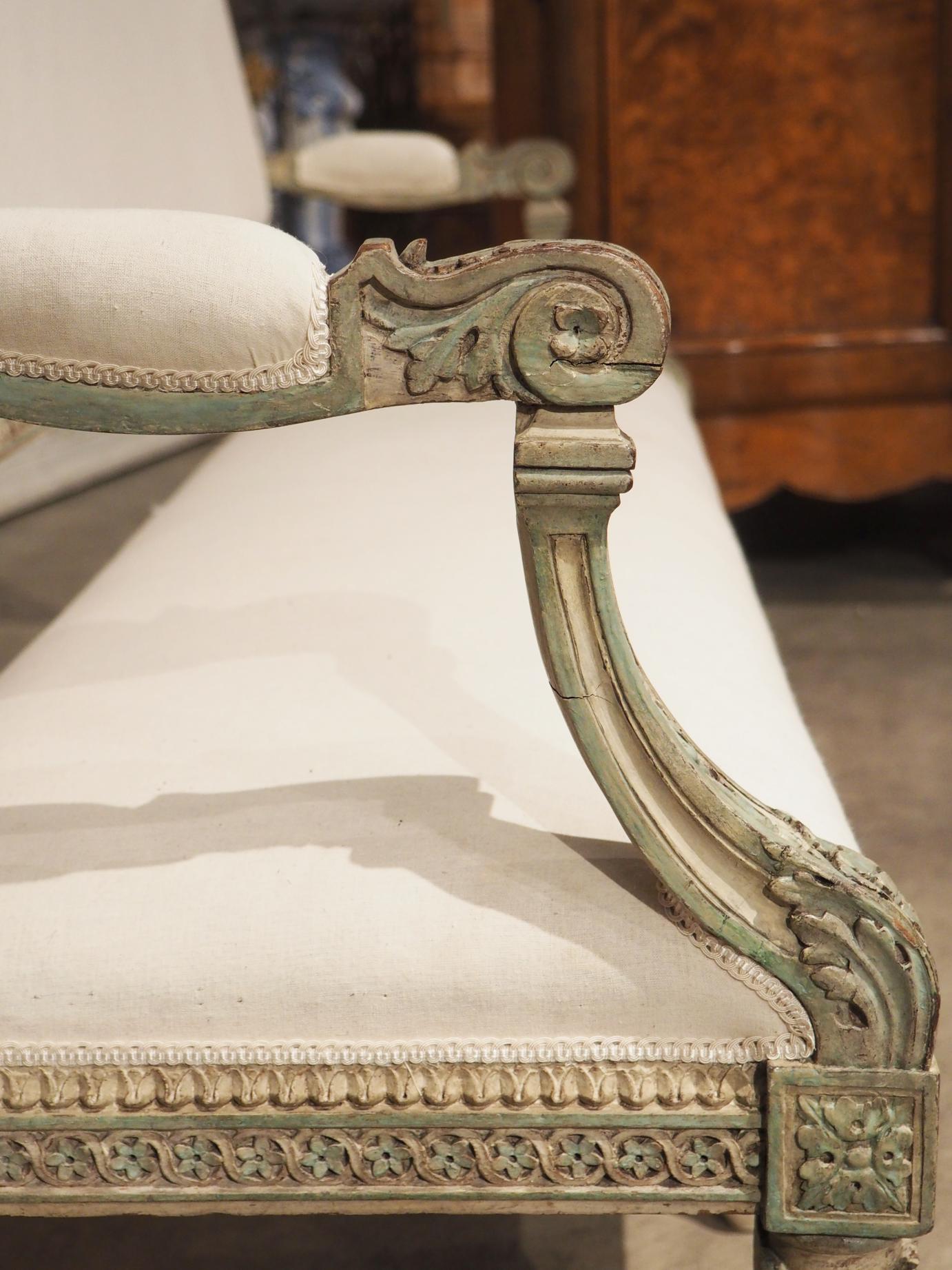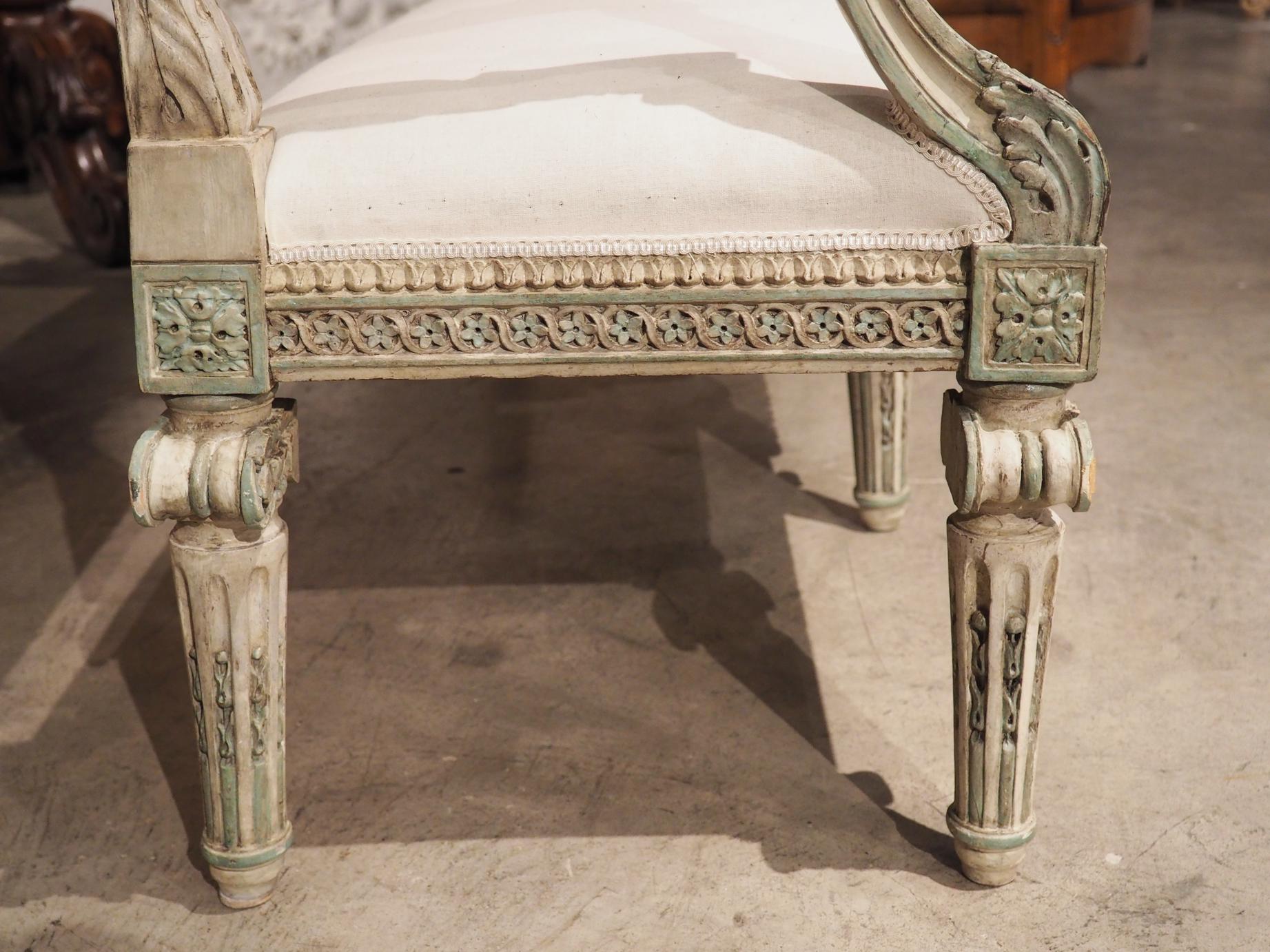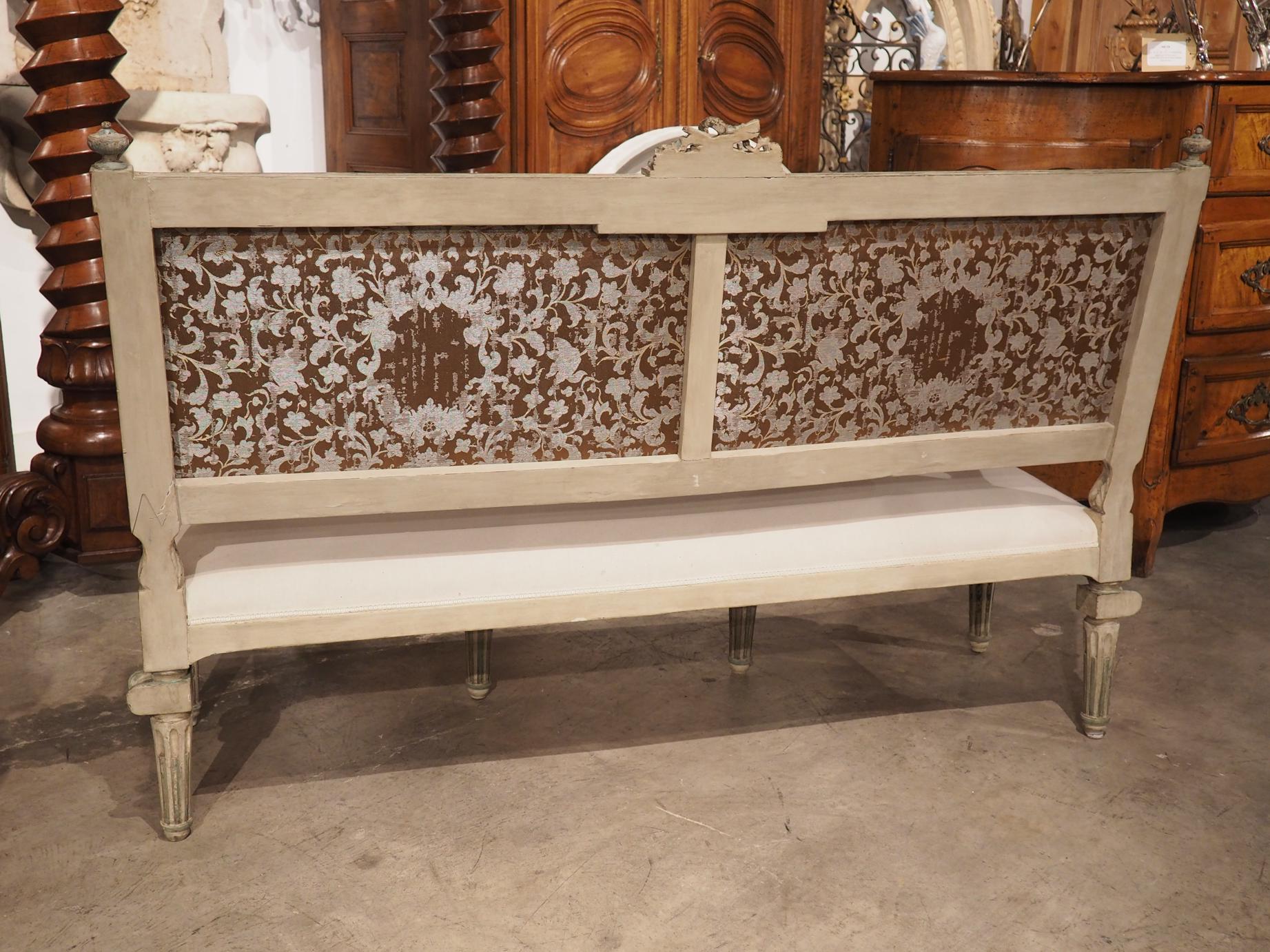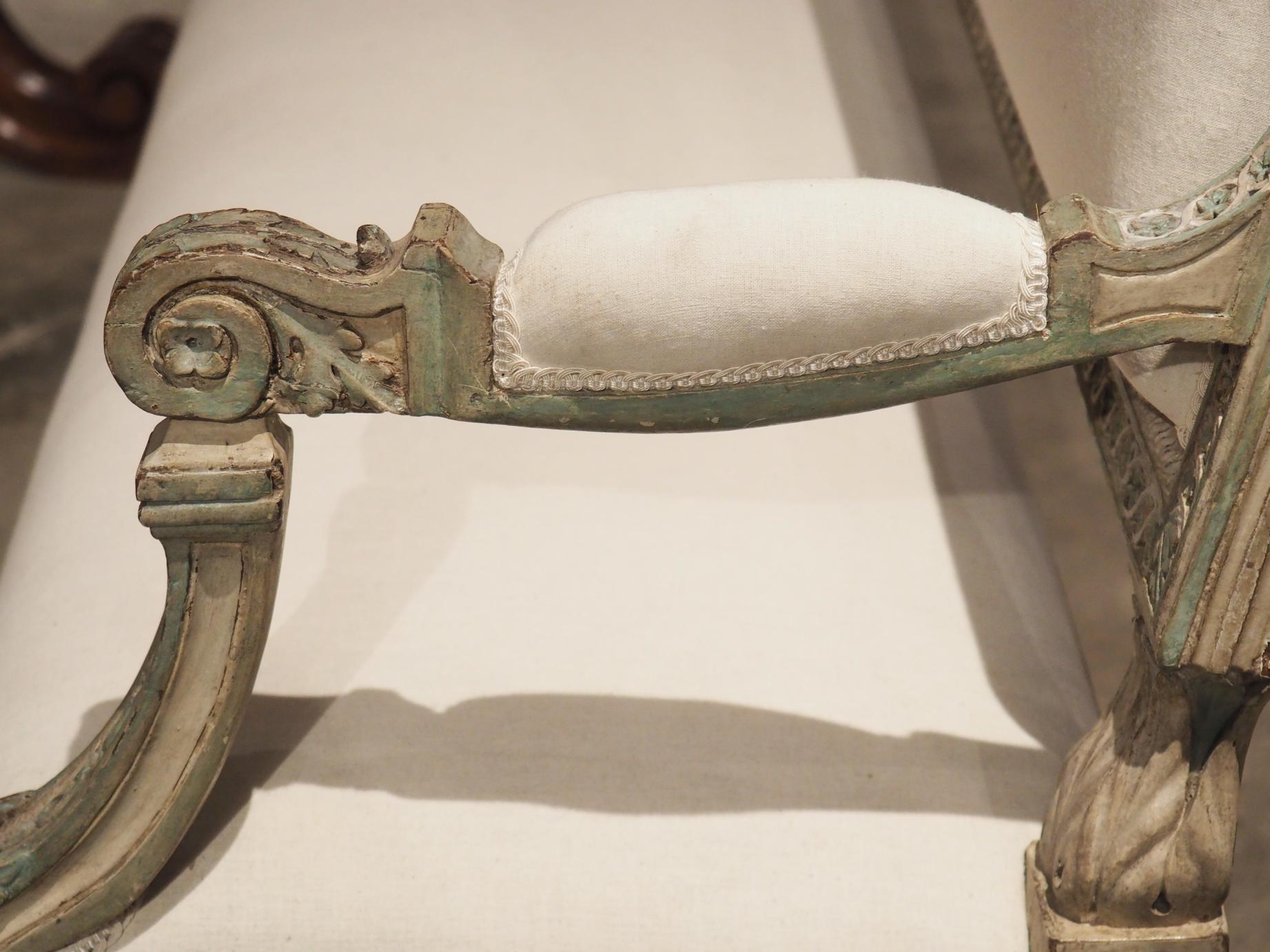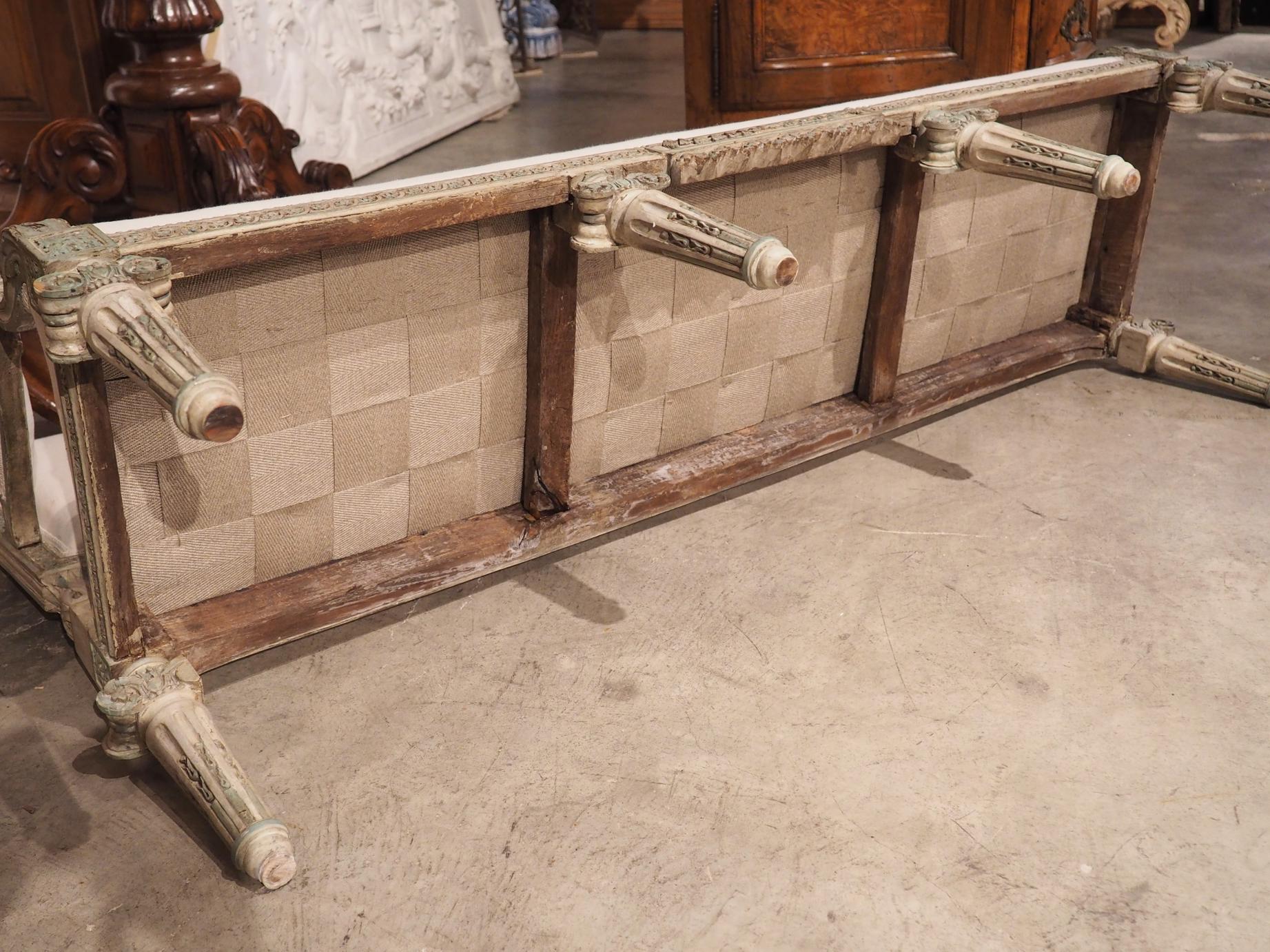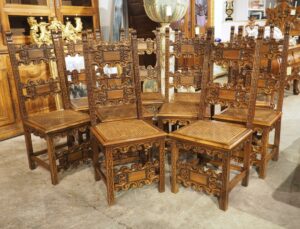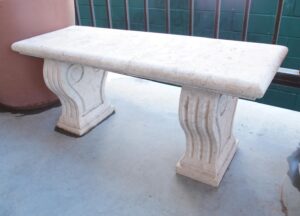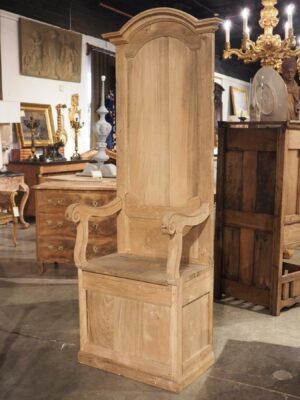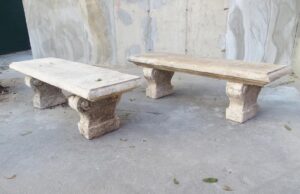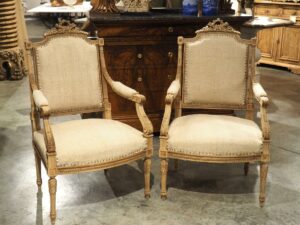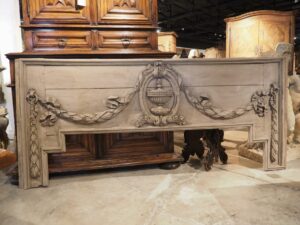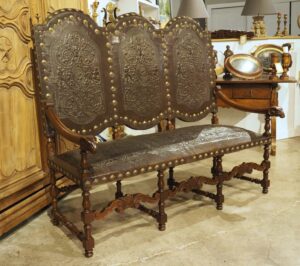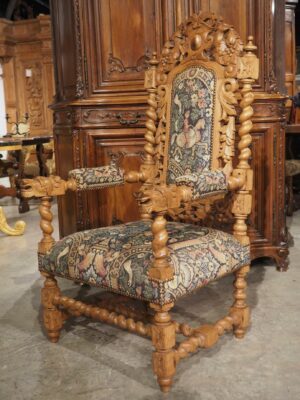Hand-carved in Italy, circa 1790, this rare lacquered beechwood banquette is from the period of Louis XVI, as noted by the Neoclassical elements. The skill of the ébéniste who created this piece is immediately evident. Hundreds of delicate and refined details have been carved across the entirety of the banquette while respecting the more rectilinear and restrained fashion of the period. The deep and luxurious motifs are rechampi, where carvings have been given a green accent so that they stand out from the painted gray background, allowing certain elements to gain prominence. An off white upholstery, bordered by gimp, has been affixed to the seat, the back rest, and small manchettes on each volute armrest (the verso side of the back has a magnificent brown silk with gray foliate display).
Both upholsteries of the back and the seat are bordered by interlaced Vitruvian waves filled with florets, a common Neoclassical motif. All of the square joineries (one on each corner of the seat, plus two at the top of the back) have been carved with a large, parted leaf. Above each back joint is a leaf cup finial, flanking an elaborate crest consisting of a quiver of arrows encircled by a crinkled ribbon and a foliate loop above repeating foliage and a sprawling rinceaux centered around a scalloped leaf. The cartouche is mirrored by a husk swag carving inset within a geometric panel above foliate cups on the underneath the seat.
Beneath the apron are four Neoclassical legs that are paired with two more on the back. Each of the legs has an Ionic order volute capital embellished with beading and egg and dart carvings. The legs taper towards a blunt arrow foot and are adorned with fluting filled with a spear-like foliate motif known as rudentures à asperges (“asparagus spears”).
A masterpiece given the craftsmanship of the carvings; the banquette is noticeably smaller than what we are used to seeing. Based on the low stature and shallowness of the seat, it was most likely a banquette designed for a child’s room or possibly even a bench for a doll or automatan collection (no visible signs of reduction). Many of the oldest examples of children’s furniture found today date to the 19th century. It was quite rare during the 1700’s for such a bench to be commissioned, indicating that it was commissioned by an important or even Noble family of the late 1700s. Our Neoclassical beechwood banquette is quite sturdy due to the nature of the wood, the joinery, and the quality of the hand cut planks that were made to support it. Today, this banquette can once again grace the bedroom of a child, or it can be placed in a narrow hallway or entry.
CONDITION: Very good antique condition with some losses to the paint and minor age separations. Old repairs, plus a small addition to one foot to enhance stability.


